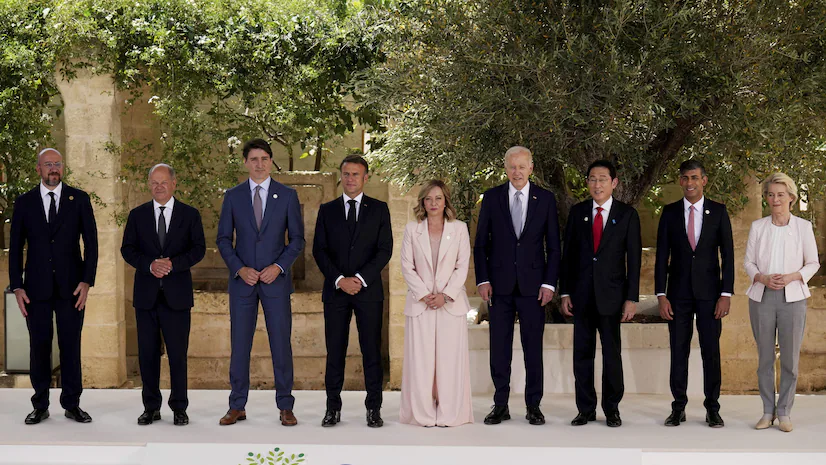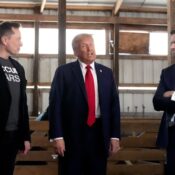
The G7 decides to lend Ukraine $50 billion using assets that Russia has frozen
Moscow has threatened to retaliate after the G7 used banned Russian assets to finance a $50 billion loan for Ukraine.
In order to help Ukraine defend itself against the Russian invasion, the G7 has decided to use frozen Russian assets to collect $50 billion (£39 billion).
According to US President Joe Biden, Moscow has vowed “extremely painful” retaliatory measures, and this decision serves as a warning to them “that we’re not backing down.”
By the end of the year, the funds are expected to arrive, providing a long-term solution to support the military effort and economy of Ukraine. Furthermore, President Biden and President Volodymyr Zelensky of Ukraine inked a historic 10-year bilateral security agreement during the G7 conference in Italy, guaranteeing US military and training support without deploying US troops.
The G7 and the EU have blocked $325 billion worth of Russian assets since Russia’s full-scale invasion in 2022, which has resulted in interest payments of almost $3 billion yearly. The $50 billion loan that Ukraine will take out on foreign markets will be serviced using the proceeds from this interest.
President Biden stressed that the loan will “put that money to work for Ukraine and send another reminder to [Russian President Vladimir] Putin that we’re not backing down” at a joint news conference in Puglia, Italy. “He cannot wait us out, he cannot divide us,” he declared, adding that “we’ll be with Ukraine until they prevail in this war.”
In addition to praising the support, President Zelensky described the new security agreement as “a truly historic day” and the strongest between Ukraine and the US since the country’s independence in 1991. G7 leaders applauded the $50 billion loan, with UK Prime Minister Rishi Sunak calling it “game changing.”
Considering the $61 billion in US military aid that was agreed upon in May, the $50 billion loan is significant. The European Central Bank decided against releasing the full $300 billion frozen money, despite those in Kyiv calling for its release.
For Ukraine, the extra financing is a symbolic gesture that its attacker is being made to pay for its defense and rehabilitation. The financing is not anticipated to immediately change the course of the conflict, though, as Ukraine is still desperately in need of more weaponry, particularly F-16 fighter jets and air defense systems.
President Zelensky declared that US exports of these warplanes are part of the new security accord. Russia is unlikely to alter its position on the conflict in spite of this assistance. The spokesperson for the Russian Foreign Ministry, Maria Zakharova, issued a warning about “extremely painful” retaliatory actions hours before the G7’s decision.
International law forbids the seizure of Russian assets that are frozen and transferred directly to Ukraine; the majority of these assets are stored in Belgium. However, this choice represents a turning point in Western attempts to defend Ukraine from Russian aggression.
All Categories
Recent Posts
Tags
+13162306000
zoneyetu@yahoo.com



